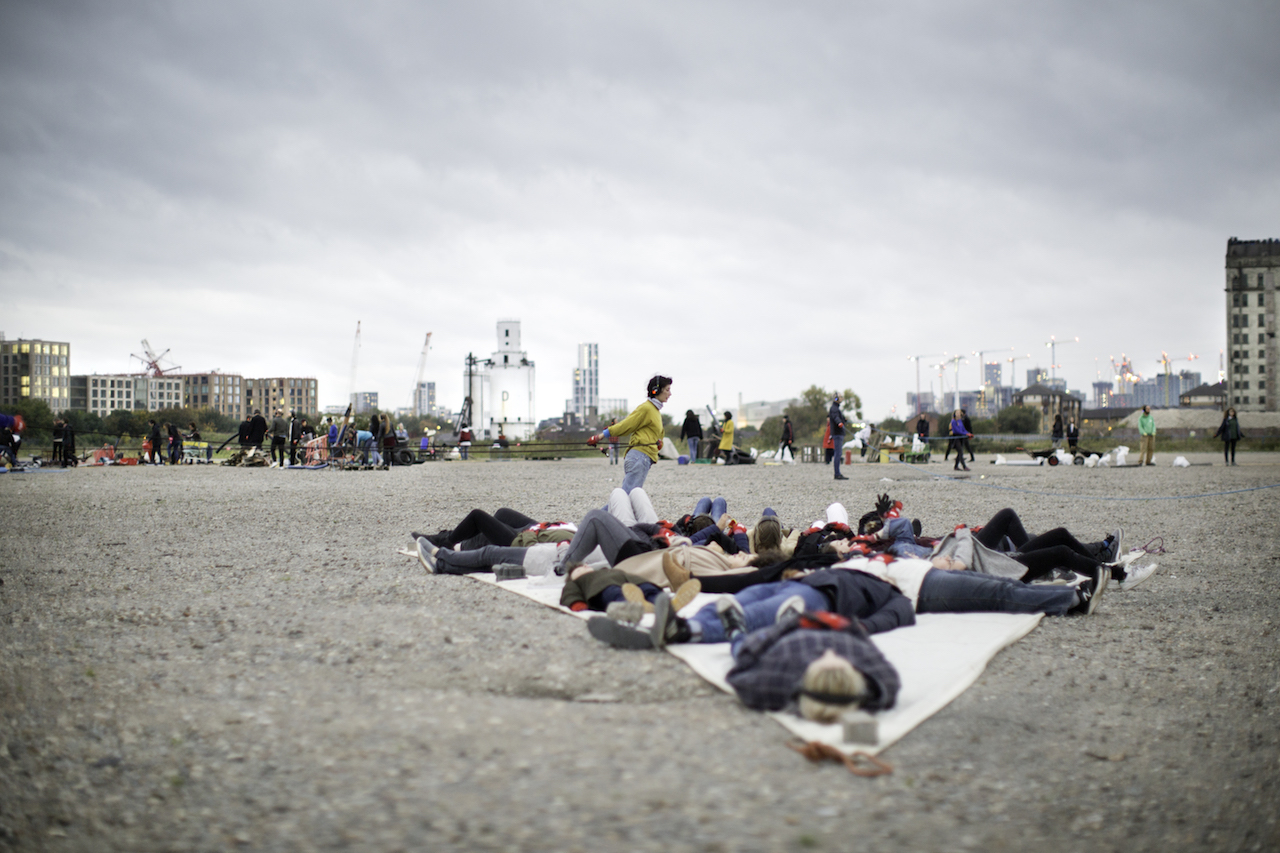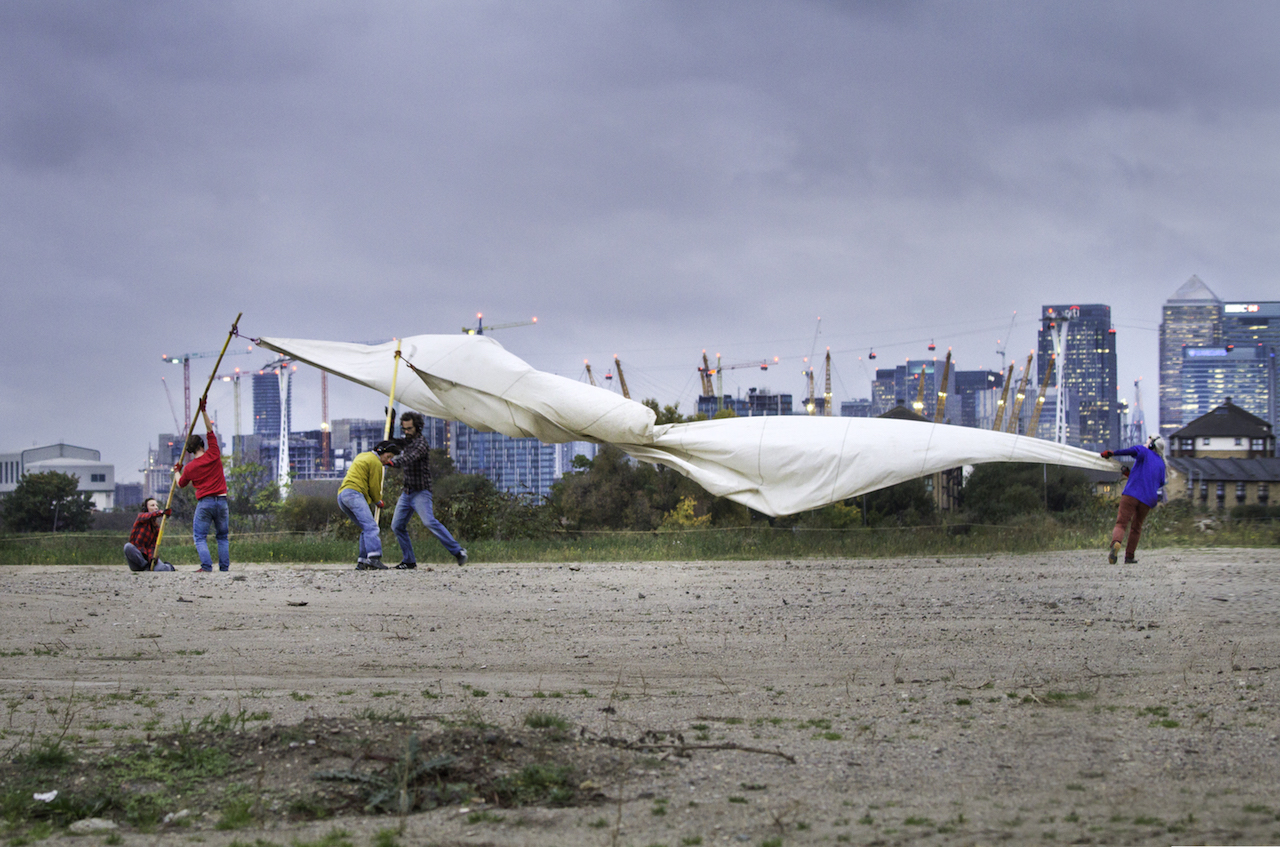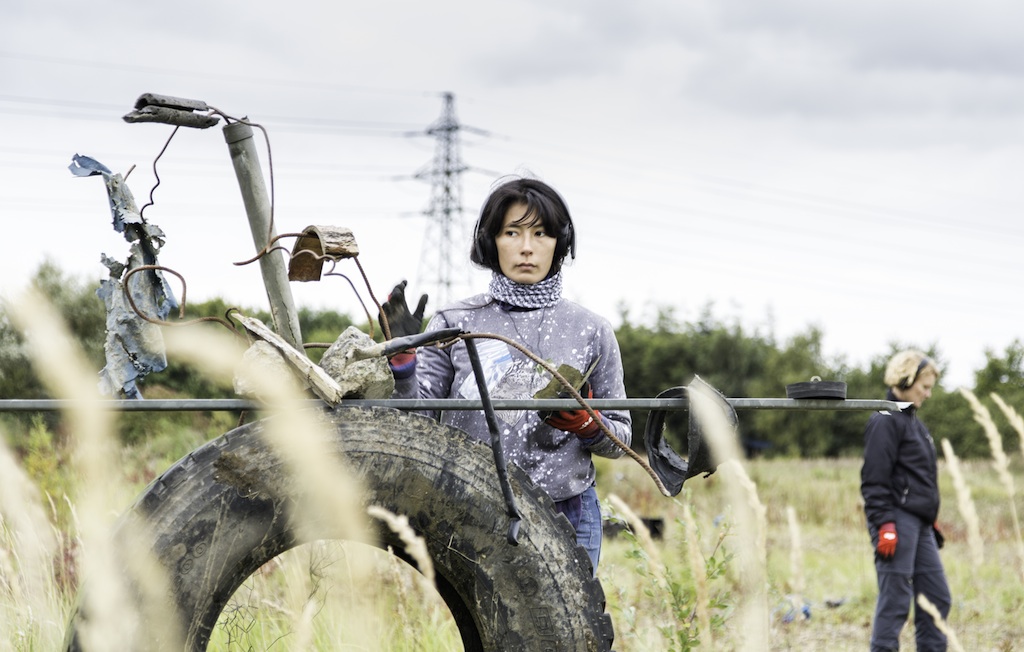Words by Maxine Flasher-Duzgunes.
At moments, dance exists as a migratory sensation. Sometimes we need to come and go from ourselves as we move, our bodies like mini-wingspans and reminders of what it is to travel between being and thinking states. In the process, we resort to collapse, withdrawal, reconfiguration, and then inevitably, flight — a way out of what for the past year has among many things, felt like a fermata of both wasted and withstood time, precious yet meaningless seconds passing through another postponement of taking off and landing.
Charlotte Spencer’s way out began with a treasure hunt to a developing enclave at the southern end of Queen Elizabeth Olympic Park, London, an event programmed by Sadler’s Wells. We arrived at an empty lot that someone muttered might one day become a skyscraper, not unlike New York’s Hudson Yards, where wilderness and concrete do-si-do in some sort of paradoxical Anthropocene.
But what about a human wasteland? Is this a Waste Land?
On a Sunday eve, Charlotte Spencer Projects Is this a Waste Land? illuminated a site where performance could reinvent itself. At first, we were invited to peruse a flea market(?), a junkyard(?), a library(?) — for many of us, it ended up becoming a paraphernalia of yesterdays, bookmarks to lives that had been abandoned. A TV remote, a rhubarb seed packet, a bicycle helmet, a lock, a seashell, a wristwatch, a water pitcher – an object poem in a sense, exhibited for our privileged eyes now menially tasked with selecting something to take with us.

“No loitering,” urged the narrator, voiced by Louise Tanoto, the first words uttered through our headsets upon being instructed to put them on, walk in a single-file line, then pause at the crossroads of a space hit equally by shadow and sun. “No photographs…No littering…No fires…No being lazy.” It was if she saw through to our pandemic selves, harboring nothing but wasted time. In these months, we became the room of white elephants that the company presented here: we ignored one another, we separated ourselves from a global space that was chaotic, dangerous, and dying. And most of all, we belonged to no one.
At times, our audio guide summoned our head into the clouds. During Is this a Waste Land? we could close our eyes and drift the bottoms of our feet from left to right with the wind like an uninhibited piece of vegetation. Other times, the harsh metal resonances would accompany a list of directives: form a tower, build a wall, find yourself at the outskirts of the space. It was a cinematic improvisation, it brimmed with questions as to whether we were responsible for what would happen here, why we were so briefly inside of everything before we were outside of it, our bodies just temporary facilitators of all these discarded things.
Alongside us, the dancers acted as cooperative nomads, each in their solo of salvaging materials and as an ensemble, re-constructing the skeleton of a sabotaged world. Here surrounding us was an emerald city of neon-lit skyscrapers and rugged overgrowth, both empty and at the heart of something no one could quite define. When they knocked down our detritus heaps, the dancers looped round and round with rope in hand like fighter jets, their courses feral but never broken. Like flocks, they were always relocating: a new project, a new destination before days end and it started all over again.
They tossed a sail — perhaps at some point used as the awning of an encampment — and in stages we lay down, the sound of airplanes indeterminately coming from real life or our headphones. At one point we all leaned back into the rope like a lifeline, unexpectedly flung to and fro when the dancers giddily shifted, interrupters of the stillness. Then people’s lips bowed, you could hear laughter, faintly muted behind the score; it was like music filling a glass.

As participants (with only the faint remembrance that we were still ticketholders), we mastered that collective life force for which we longed, holding a container for love and creation in the interval between dusk and dark. For all those involved in the work, Spencer has revitalised the hope that the process remains even after the site is demolished, or rather, after it disappears. Amongst strangers gripping biscuits and cups of cocoa at the night’s end, we can also hope that our hands don’t grow cold, that our memory of being together doesn’t fade, that we can keep the fire burning despite the darkness all around.
Concept and Direction: Charlotte Spencer
Composition and Sound design: James Keane and Tom Spencer
Text: Charlotte Spencer
Narration: Louise Tanoto and Ben Ash
Performers: Kirsty Arnold, Ben Ash, Ben McEwen, Thomas McKeon, Petra Soor, Rachel Lopez
Creative Producer: Keren Kossow
Production Manager: Alma Lindenhovius
